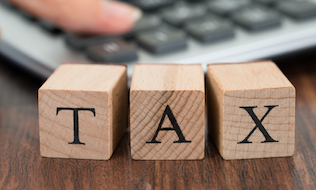

The idea of taxing employee discounts appears to be on hold for now, but the government may reintroduce it at a later date. If it does, the Canada Revenue Agency may want to consider the implications a little more carefully.
Employee discounts are already taxable when they’re substantial in nature. If an automobile company employee gets a car for free, the lease value of the car counts as a taxable benefit. Applying the same treatment when the discount involves a free hamburger from the restaurant where you work is equally logical in principle but much harder to apply in practice. Ultimately, it may not be worthwhile to do so.
Read: Confusion remains despite federal retreat on guidance about taxing employee discounts
What the Canada Revenue Agency seems to have overlooked in its zeal to tax employee discounts is that the very same principle can apply to certain benefits that civil servants are receiving for free and which very few other Canadians will ever get. In particular, consider the federal public service pension plan. The best estimate of the ongoing cost of the pension benefits in this plan is 20 per cent of pay, but that’s only an estimate based on the plan achieving a four per cent real return, something it can do only by taking on considerable investment risk. If the risk doesn’t pan out, the cost of the pension could be much higher. And the government (meaning taxpayers) would shoulder the extra cost, not the participants in the plan.
It turns out the cost to guarantee the benefit under the public service pension plan is surprisingly high: roughly 20 per cent of pay over and above the 20 per cent best estimate of ongoing cost. The total value, including this defined benefit guarantee is, therefore, closer to 40 per cent of pay. The plan participants are paying absolutely nothing for that guarantee right now, even though it has a value that’s comparable to a company-paid car.
Of course, the cost of pension benefits isn’t currently taxed in the hands of any employee in Canada, at least up to a certain limit. That’s a good thing, since society should be encouraging people to save for retirement. But the government imposes limits on this tax shelter in the case of other Canadians, so perhaps it’s time to level the playing field when applying them.
Read: Registered pension membership rises, DB plan coverage drops: OSFI
In the case of registered retirement savings plans and defined contribution pensions, the limit on what’s tax-deductible is 18 per cent of employment earnings (I will ignore the dollar cap). If the federal government truly believes 18 per cent is a fair and reasonable limit on such arrangements, it should apply the same cap to the federal public service pension plan.
There are various ways to bring the public service plan onside, with some being more viable than others. Let’s first consider approaches that would work but have no chance of ever becoming reality. The first is to trim the pension benefits that accrue under the public service plan, maybe a lower accrual rate coupled with conditional post-retirement indexation.
A slightly more palatable option is to take a page from the Canada Revenue Agency’s idea of taxing employee discounts by taxing the defined benefit guarantee under the plan to the extent that the overall cost exceeds 18 per cent of pay. So if the overall cost is 40 per cent of pay, then public service employees would be paying income tax on 22 per cent of pay, even if their actual take-home pay doesn’t change.
Finally, the government could level the playing field by increasing the tax-deductible limit under defined contribution plans to 40 per cent of pay, instead of 18 per cent. None of these solutions will ever happen.
Read: 2017 tax change gives extra incentive to look at annuitizing certain pension obligations
But there are other solutions that would work and are at least within the realm of plausibility. For example, the federal government could skirt the problem entirely by switching to a defined contribution pension with an overall contribution limit of 18 per cent. Alternatively, it could keep essentially the same plan as it has now but remove the defined benefit guarantee, effectively changing the plan to a target-benefit arrangement. As a variation on that idea, it could make the defined benefit guarantee optional on an individual basis, so employees who choose to avoid it would end up in a defined contribution or target-benefit plan. And those plan members who still want the defined benefit guarantee would pay the associated tax.
What the federal government can’t do is argue that the cost of the public service pension plan is really only 20 per cent of pay, rather than 40 per cent. The defined benefit guarantee has a real value, which the government itself implicitly acknowledges when one considers the yield on real-return bonds. The real yield on those bonds is currently just 80 basis points. If the government was absolutely sure it could achieve a real return of four per cent on investments, as the public service plan assumes, then why not offer a risk-free four per cent yield to all Canadians?
Read: Can the feds overcome opposition to pass target-benefit pension bill?
